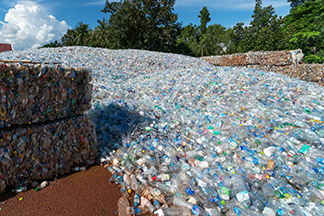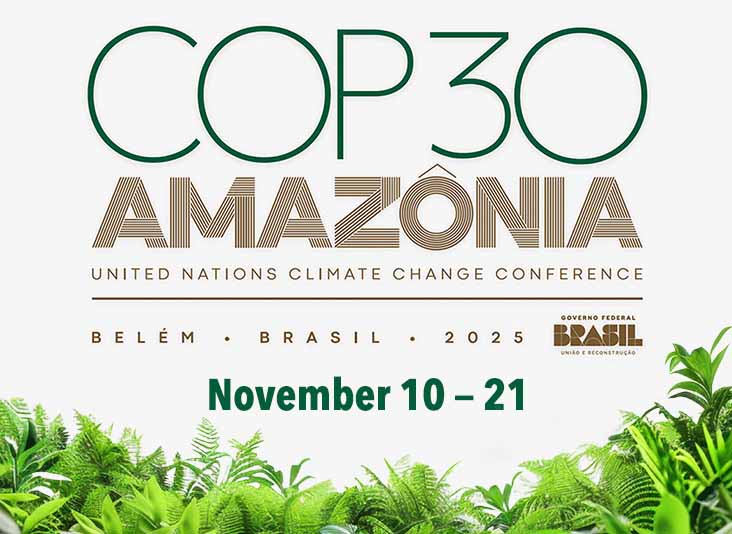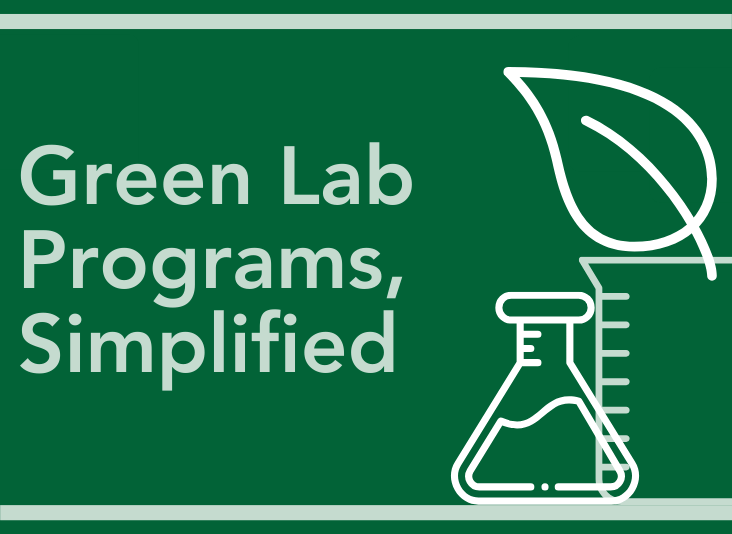The Plastic Problem: Increasing Transparency in Waste Management
Reduce, Reuse, Recycle. These words spur our thoughts and actions surrounding waste generation and disposal, and therefore the programs we create to manage our waste systems. But recently, as countries around the world have been changing their own management process on a grand scale, a global recycling crisis is being uncovered and the citizens of the world are all starting to take note. For this crisis to be addressed, there first has to be a push to understand the complexity of the problem we are attempting to correct.
Each year it is estimated that Americans throw out about 22 million tons of products that could have been recycled but aren’t. A person believes these products are being repurposed, that by putting them in his or her single-stream recycling bins they will be collected, sorted, and processed in such a way that diverts them from landfills and incinerators, and therefore out of our natural environments. However, failures in our country’s recycling infrastructure and source choices made by producers of those products make it almost impossible for the waste recycling paradigm to be followed and carried out as intended. In fact, as of 2015, when approximately 6300 million tons of virgin plastic had been produced, only 9% of that total was estimated to have been recycled, with a projected 12% having been incinerated and 79% thought to be accumulating in landfills or the natural environment.
A Complex Global Problem
Individuals, and by default the institutions they inhabit, can help lessen the gap between the intended waste cycle and the bleak reality of recyclable waste’s fate. However, to do so, we must understand the full scope of the problem and have an accurate representation of our own inputs into the global waste system, a market with a size expected to reach $484.9 billion by 2025. Many companies – start-up and otherwise – are taking big steps to offer solutions to the world’s recycling problem, but these developments are in the early stages and require cooperative participation to put them into place.
Some parts of our waste recycling and repurposing system do work. For example, aluminum cans can be melted down and repurposed into another functional aluminum can, putting that material back into the consumer cycle and keeping it out of landfills and incinerators. But this system does not work as well with plastic products, in part because there are so many different types of plastics – those that can be recycled require different processes to break them down into materials capable of being repurposed. And once it is broken down, plastic recycling results in a lower-quality material that is more expensive to purchase than virgin plastics and is limited in the applications for which it can be reused.
Due to the low market value of these “down-cycled” plastics, it is a challenge for domestic manufacturers to justify the purchase of this material as an input to their own production. Traditionally, the market for these materials was found internationally, and the U.S. was among many countries that found they were able to sell their “recyclable” waste to these foreign markets in countries such as China and Malaysia where it would then be sorted and processed. In early March 2018, enforcement began on China’s new contamination standards. As a result, plastics and paper are among 24 materials that are no longer accepted into the country. And China is not alone in this pledge. The Basel convention is a treaty signed by 187 countries meant to regulate the movement of hazardous materials between countries; plastic was recently added to that list of hazardous materials as defined by the treaty. As a result, U.S. export records can be said to show that each month, approximately 19,000 shipping containers of plastic recycling that was once exported abroad is now being stockpiled or otherwise improperly disposed of domestically.
While these policy changes have thrown wrenches into the waste disposal systems of many communities and institutions, they have exposed a problem that needs to be fixed regardless. It points to the hazardous outputs of the recycling processes that pollute the communities where processing takes place and highlights the need to create alternative processes that are more economically viable. Fortunately, consumer preferences for greener products do align with these needs and are giving a push to corporations with financial interest to act accordingly. Recently there have been targeted goals made by the world’s major manufacturers allowing for heavy investments in R&D to find innovations across the entire recycling system.
Recycling Chain Deficiencies
The major broken links in the current recycling chain occur at the collection, sorting, and processing stages. The collection phase should ensure that everything that is recyclable gets into the recycling system, but currently about 40% of the households in the country don't have access to waste recycling at home. For the recyclables that are collected into the system, they require cleaning and sorting to ensure the materials are grouped together by quality and viability of material as well as by the processes required to break them down. Once the materials have been adequately sorted, they can then be processed by filtering, shredding, and melting to be turned into plastic pellets that can be shipped to a factory that can make something new from those pellets. This process is time consuming, labor intensive, and uses quite a lot of fossil fuels, making those resulting pellets more costly to manufacturers than newly created petroleum-based plastic.
Collection
All stages of this recycling chain are poised to transform. Investments have been made in companies that focus solely on municipal recycling and have the ability to target collection efforts in areas with traditionally low recyclable collection rates. This also moves those communities’ management systems away from privatized waste services that have been utilized in the past for all municipal waste streams and that have monetary incentives that don’t align with recycling. Such companies have traditionally made money when materials of any kind wound up in a landfill or waste-to-energy plant as opposed to a recycling facility.
Sorting
Improper sorting and the presence of non-recyclable materials and contaminants in the recyclables that were once exported abroad was one of the largest drivers of the recent bans. Advances in artificial intelligence (AI) and robotics have been able to increase the speed and accuracy with which recyclable materials can be sorted. This increases the chances of the sorting actually taking place beyond the hands of the consumer, it lowers the cost of this aspect of the recycling process, and it decreases the amount of trash and other contaminants that end up in each bale of plastics that will be sent for further processing.
Processing
New processes and technologies – chemical, biological or otherwise – have come to light that can decrease the time, energy, and money needed to break down plastic. It is also increasing the potential for the different types of plastics that can even be broken down. For example, #5 plastics made of polypropylene have not been traditionally recyclable, but there is a new plant being built in Ohio that can process this material using a gas solvent distillation and filtration system. This system breaks down products such as straws, plastic bottle tops, potato chip bags, packing tape, and disposable diapers, to a material with near virgin plastic-like quality at just a fraction of the cost of traditional and chemical processing. This results in an end material that has greater repurposing potential and is cost-competitive with virgin plastics. Again, advancements in the processing phase are still in early stages and are not yet developed to the degree that they are being utilized as the ultimate solution to plastics recycling. But they are growing.
Production Improvements
Increasing awareness about the faults in our current system is driving change from the production side as well. Many manufacturers are performing life-cycle analyses for their products and are thinking of changes to their design process that can increase their product’s recyclability before they get into the hands of the consumer. As of 2018, many major corporations such as Unilever, Nestlé waters, Coca-Cola, and PepsiCo have made commitments to increasing the recycled content they source into their packaging as well as increasing the reusability of their products and packaging after use.
Additionally, many manufacturers are attempting to recapture and divert from landfills their own single-use products. A great example of this is Kimberly-Clark’s RightCycle program that allows for the recapture of nitrile gloves and other lab safety equipment that they produce. This program has allegedly diverted more than 300 tons of waste from landfills since its launch in 2011 and repurposed these wastes into other consumer products such as flower pots and lawn furniture.
Lasting Change Starts with the Consumer
While it seems that waste processing facilities and manufacturers that create “recyclable” products are taking steps that are meant to address the world’s recycling crisis, an institutional change must be made at the consumer level to drive these process changes. There are problems at every step of a product’s or package’s life that can be addressed on a smaller, more individual-consumer driven level. The greatest change that can be made presently is to minimize how much we are using and then throwing away. There is no “away.” Create consciousness around purchases of single-use plastics and search for practical alternatives for the products that are more ubiquitous and the hardest to recycle, such as plastic bags and utensils. Everyone, from a single individual to the institutions within which they operate, should strive to minimize all their waste streams to the greatest extent possible.
Waste Minimization and Diversion Efforts
There is also potential for greater benefits to be had from waste minimization and diversion other than a greater sense of environmental stewardship. While making changes to internal waste management programs can be time consuming and costly, there are several examples of corporations that have set and worked toward waste minimization goals that have resulted in a cost benefit. For instance, Subaru set a goal of working toward a “zero waste” management system at its U.S. plant in 2002 and has since seen savings between $1-2 million annually. Sierra Nevada Brewing Co. has been operating at nearly zero waste for several years and has saved over $5 million since they were able to achieve 99.8% waste diversion.
Where to Begin
So how can Triumvirate Environmental help in setting and achieving these waste diversion and minimization goals? To set feasible and measurable goals toward waste reduction, an accurate scope of current operations and waste generating processes is needed. The National Association for Environmental Management (NAEM) recently published a report on the trends that are shaping the future of environmental health, safety, and sustainability (EHS&S) management. NAEM members and other EHS&S experts were interviewed and surveyed to get a sense of how their existing programs are being altered to incorporate a greater sense of responsibility toward sustainability on a corporate level. Eighty-three percent of companies that responded said their boards of directors are reviewing their company’s sustainability metrics, with 49% choosing to publish an integrated report communicating their environmental and social metrics alongside their financial performance to help their process of review of their sustainability metrics. This data brings to light the need to manage waste and consumption systems as a whole rather than as a sum of its parts with regards to sustainability.
Triumvirate works with facilities and organizations that have large generation rates across all waste streams, including plastics, food and other organics, paper, hazardous waste, e-waste, and regulated medical waste. For some of these waste streams, there is a regulatory requirement for prioritizing reduction and diversion of these wastes. For others, the drive originates from customer demand, marketing potential, and supply chain pressures. For institutions that should choose to set waste reduction goals, it is unfortunate that the traditional management system for different waste streams tends to be segregated by all the different departments that play a role in waste generating processes. EH&S, EVS, Building Services, Purchasing, Food and Nutrition – all of these departments play a role in managing and tracking inputs and outputs to an institution’s consumption systems. But how often do these departments share metrics with one another? By bringing in a third party to perform a waste audit and gather the pertinent information from all participating departments, Triumvirate can create integrated reports displaying data relating to all waste streams, thereby increasing visibility for current waste production status and increasing the ease with which areas for the greatest potential for waste reduction can be identified.
Learn more about Triumvirate Environmental’s Waste Recycling & Sustainability solutions. To discuss how your organization can improve its waste management and waste reduction efforts, contact our experts.







